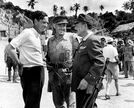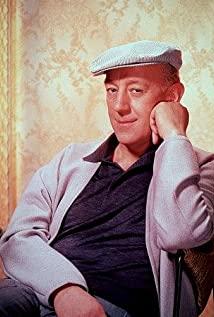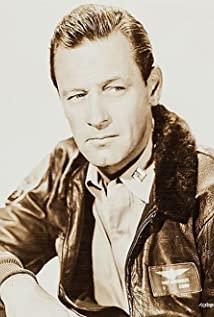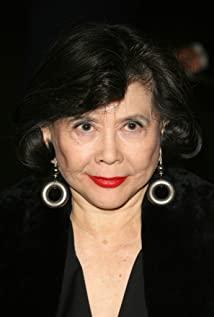The insurmountable gulf that some eyes see between Eastern and Western minds may be nothing but a mirage.
On the Thai-Burma front in Southeast Asia during World War II, a group of British and American prisoners were forced to build a railway bridge for the Japanese army to connect to the front line under extremely simple conditions and in the harsh environment of the tropical jungle. The Allies decided to blow up the bridge after learning of the situation. This is the main plot of the film, a typical military film. But the charm of classic movies is that they can always go beyond the limitations of the subject matter to reflect a deeper content of ideas. The seemingly random plot in the movie is the key to interpreting the movie, and this is where the directors' painstaking efforts lie.
meaning of railway
Welfare Distribution and Society
Key Point: Speech on the Soapbox
Deliberately highlighting cultural contrasts
A metaphor for class, division of labor and revolution
meaning of railway
If you have read Dostoevsky's novel "The Idiot", you will surely remember the comment on the railway by Lebedev, who was good at explaining the book of Revelation. "I don't believe in those trains that carry food for mankind! For the trains that carry food for all, if they lack a moral basis for their behavior, may very indifferently exclude the great part of mankind from the right to such food, and This has happened all too often…”
Coincidentally, at the beginning of the film are several dazzling graves next to the railway.
The railway represents obviously the development of science and technology. With the advancement of science and technology, we can master more resources, which also makes it possible to improve the overall living conditions of mankind. In this way, it is possible to achieve the wonderful wish of "railway to transport food to all mankind". The emergence of railways broke through the limitations of time and space, and could obtain distant markets and resources, just as two huge railway projects in the nineteenth century—the Trans-Siberian Railway and the American Pacific Railway appeared in the era of rapid capital expansion.
Of course, capital cannot serve everyone equally. On the contrary, capital always uses technological progress to exploit the masses for profit in the process of rapid change. The tomb next to the railway is so dazzling.
Welfare Distribution and Society
The operation of the railway requires the prisoners as laborers to save their own consumption as much as possible, such as food, medicine, clothing, and rest time. Saito, who is in a dominant position in the film, can also use the control of these survival resources as a means of intimidating management.
The resources of such a society are allocated with bayonets by violent feudal lords, as in The Brothers Karamazov, as the Inquisitor says, "From them we take the bread that they got with their own hands. , and then distributed to them, and there is no miracle."
When Saito wanted to send the supplements raised by the Red Cross to the prisoners of war as gifts and gifts, they raised their heads and laughed: Haha, he sent us what originally belonged to us!
Key Point: Speech on the Soapbox
This is a key point to understand the film. The close-up shots and the weird reaction of British Lieutenant Colonel Nicholson lasted for three seconds, which shows the director's hint. And when Saito spoke again the next day, what he was standing on changed from a box to a long bench with a ladder.
The soapbox was the hallmark of the free speech movement in the second half of the 19th century, when at Hyde Park Speaker's Corner in England, workers' rights advocates could speak freely by standing on a soapbox to build political influence. This is still the case now, when the British government banned the posting of topics about Britain's participation in the Iraq war in 2003, prompting two million people to take to the streets to protest.
Then Lieutenant Colonel Nicholson, who is a British, must be familiar with this. What he wonders is why the soapbox, which is a tool for personal freedom and political participation in his own country, has become the platform of the feudal ruler here?
How can the tools of interpersonal communication and political participation in a free society become tools of domination for the purpose of enslaving people?
deliberate contrast
In the film, the confrontation with Saito led by Lieutenant Colonel Nicholson finally ended in a compromise with Saito, and Nicholson and his officers finally got rid of low-level repetitive labor and could play their technical work such as construction, human coordination and management. The lively scene of the prisoners rejoicing is very contagious. If we regard Saito as a feudal lord, then this movement is undoubtedly a bourgeois revolution to overthrow the feudal lord with the participation of the emerging bourgeoisie and the proletariat. In the collective meeting, all the decisions were made by the POW officers, and Saito sat in his seat awkwardly and mechanically issued the decisions made into orders.
There are many interesting contrasts before and after the revolution, which in the past were often considered cultural contrasts between Eastern and Western societies. Japanese officers rely on people to call for tea, and British officers ring the bell; Saito has an aboriginal old man who helped him pull a rope to fan the wind, but the British army used an electric fan; Japanese engineers were stupid, but British engineers were professional; Saito used Punishment and favor cannot manage British prisoners of war, but prisoners of war can work with injuries under the management of British officers.
This shows that after the revolution, the division of labor has developed, and the discovery and respect of human values can liberate people from the low-tech society that relies on manpower. However, in the construction of the bridge, the labor burden of ordinary prisoners of war increased even more. In a feudal society, the introduction of ready-made Western skilled workers to expand the division of labor significantly improved productivity, but the living conditions of ordinary workers did not change. The author of Insights, who saw sixty years ago the path that East Asian societies are taking today.
Theme: A metaphor for class, division of labor and revolution
What does the bridge represent? If there is no division of labor between general labor and technical labor, the bridge cannot be built. The bridge is a symbol of the division of labor in social production. The division of labor is an indispensable part of social development, but the division of labor and social development come together, and it is based on class and interests. Divided, "the whole society is increasingly divided into two opposing classes", when the revolution came, Lieutenant Colonel Nicholson subconsciously protected the bridge - this symbol of division of labor and class, man was bound by what he created, which It needs a revolution to break through, and this is not just a topic of "technology is confusing".
It is because we do not pursue an ideologically good or legitimate society, and the value of human beings should be placed in the most fundamental position.
Only under this premise can the insurmountable divide between the East and the West turn into a mirage.
View more about The Bridge on the River Kwai reviews











